Charleston Currents #11.35 | July 15, 2019
LIGHTS FOR LIBERTY. Hundreds of people attended a Friday night vigil at Riverfront Park in North Charleston to rally against the Trump administration’s immigration detention practices. See contributing photographer Rob Byko’s thoughts and photo essay below.
FOCUS, Matheny: Gen Xers are driving trend of multi-generational housing
COMMENTARY, Brack: Redrawing districts as usual could cripple democracy
IN THE SPOTLIGHT: Charleston RiverDogs
PHOTO ESSAY: Lights for Liberty provides powerful, thought-provoking night
GOOD NEWS: RiverDogs among leaders in licensed merchandise sales
FEEDBACK: Send us your letters
MYSTERY PHOTO: Old, brick church
S.C. ENCYCLOPEDIA: Dixie Hummingbirds
CALENDAR: Lowcountry Jazz Festival to return over Labor Day weekend
FOCUS, Matheny: Gen Xers are driving trend of multi-generational housing
Via Digit Matheny, contributing editor | This Is Us. Jane the Virgin. Black-ish. What do they have in common? They are all family television programs that have members of multiple generations living under one roof. But the reality of multi-generational living is more than sitcom fodder.
According to the 2019 Home Buyer and Seller Generational Trends report by the National Association of REALTORS® (NAR), multi-generational housing continues to be a growing trend among homebuyers. This trend is driven largely by Gen Xers, who are the second-largest band of homebuyers today at 24%. Of that cohort, one in six purchased a multi-gen home, half of whom cited accommodating adult children as their reason for doing so.
When it comes to millennial buyers, nine percent purchased a multi-generational property they could share with aging parents, per the report.
Whether you’re looking to accommodate aging parents or making room for your boomerang child, these tips will help you find the right place to make it work.
Builders. Look for a home that was built with multi-generational living in mind. Schumacher Homes, Lennar, and Plantation Homes are just a few of the builders offering a multi-gen solution in a brand-new residence.
Tailor your home search. If custom built multi-generational home isn’t doable, look for a home that’s easily convertible. A downstairs bedroom and bath is key for older residents, and an en suite bathroom is even better. A home with a basement or attic may seem like an ideal place to turn into a grandparent’s haven, but stairs can be dangerous and obviously wouldn’t work for a parent using a walker or wheelchair.
Guesthouse. A property with a guesthouse or enough land on which to place a granny suite or tiny home is another option. Just make sure the land is zoned properly to accommodate this type of structure.
Make smart renovations. Taking down walls to create an open floor plan is a smart move that can have a positive impact on your home’s value and also make it more accessible for aging parents.
The National Association of Home Builders’ (NAHB) Aging-In-Place Remodeling Checklist recommends a “5-foot by 5-foot clear/turn space in living area, kitchen, a bedroom, and a bathroom.” They also suggest wide hallways that measure a minimum of 36-inches across, good lighting, and non-slip flooring.
Digit Matheny is a local Realtor with Carolina One. You can learn more about his business at this website.
- Have a comment? Send to: editor@charlestoncurrents.com
BRACK: Redrawing districts as usual could cripple representative democracy
By Andy Brack, editor and publisher | The S.C. General Assembly now has a license to steal your vote, courtesy of the U.S. Supreme Court.
 In a late June decision that surprised many students of representative democracy, the high court ruled it was perfectly fine for state legislatures to draw election district lines for partisan purposes.
In a late June decision that surprised many students of representative democracy, the high court ruled it was perfectly fine for state legislatures to draw election district lines for partisan purposes.
In other words, the justices didn’t say no to past efforts by leaders to make districts more Democratic or Republican. The court essentially said it was OK to gerrymander district lines to give a huge advantage to one party over the other.
And guess who draws the lines? State legislators. In South Carolina – unless something dramatically changes in the 2020 elections for S.C. House and S.C. Senate – the June ruling means Republicans will work hard to create even more safe Republican seats so they can continue their death grip on the legislature.
In turn, that means the court’s decision is a victory for incumbency protection and, at least in South Carolina, for the GOP. It’s a huge loss for fairness and equal representation. And it makes the job of Democrats and third parties even harder. It means that if you live in a partisanized, gerrymandered precinct, your vote won’t really count – because in all likelihood, the favored party is going to win regardless.
This is wrong. It softens and weakens our democracy. Elections should actually be competitive, not artificially manipulated for political purposes.
To get an idea of how this kind of manipulation works, just look to South Carolina’s seven congressional districts today. After the 2010 census, state legislators redrew districts so six of the seven districts so favored the GOP that Democrats were essentially guaranteed only one seat in the U.S. House.
But it didn’t have to be that way. State lawmakers could have redrawn maps in 2010 to shift some voters from the majority-minority district in the middle part of the state to the state’s two coastal districts. By boosting minority voting populations in those two districts by, say, 10 percentage points, Democrats would have had a fair chance of winning those seats. And more importantly, the districts would have looked and felt more like the actual population living there, making it more representative.
The same kind of shenanigans go on in the drawing of districts for S.C. House and S.C. Senate. In 2018, for example, a Statehouse Report study showed that of the 124 state House seats, 42 Republicans and 28 Democrats faced no challengers in the November election. More importantly, only 10 of the 124 elections were actually somewhat competitive, defined very loosely as elections where the margin of victory was less than 20 points.
Unfortunately these days, sophisticated computer mapping systems bundled with robust census data allow redistricting specialists to slice and dice things any way they want. That’s how you get district lines running along bike paths and rivers to connect communities otherwise disconnected. And that’s how you get only 10 truly competitive House districts in a state of 5 million people.
Something has to be done to keep politicians in office from controlling the districts in which they run.
First, urge state legislators to support efforts to draw fair lines by supporting proposed legislation in the General Assembly to do just that. If your official doesn’t sign on to a bill before the end of March, you can call them out – and file against them as being for powermongers against fair elections.
Second, support initiatives to put a constitutional amendment on the November 2020 ballot that would force the creation of a truly independent redistricting commission that would steer the power of drawing lines from legislators to citizens. This has been done in at least nine states – and it’s working to create fairer elections.
Third, vote against anyone who has been called out as being against fair elections.
Finally, if the good old boys are able to draw the lines however they want after the 2020 Census results become available in early 2021, you can give money to groups like the League of Women Voters or S.C. Progressive Network to help them file lawsuits to protect our democracy.
Let’s take away the redistricting car keys from state legislators and put them in the hands of the people.
Editor and publisher Andy Brack’s new book, “We Can Do Better, South Carolina,” is now available for $14.99 in paperback via Amazon.
- Have a comment? Send to: editor@charlestoncurrents.com
SPOTLIGHT: Charleston RiverDogs
 The public spiritedness of our underwriters allows us to bring Charleston Currents to you at no cost. This issue’s featured underwriter is the Charleston RiverDogs.
The public spiritedness of our underwriters allows us to bring Charleston Currents to you at no cost. This issue’s featured underwriter is the Charleston RiverDogs.
The team is home later this week with a four-game series with the Lexington Legends.
In 2018, the club celebrated its 25th season (that’s 175 years in “Dog” years!!) and, for the second season in a row, hosted more than 300,000 fans. The team had a 64-72 record, but saw 15 players promoted to higher levels in the club’s structure during the season. Click here to review the season.
The Lowcountry’s leader in sports entertainment, Charleston RiverDogs baseball is an attractive, affordable medium for your group or business. The RiverDogs develop the next major league stars for the 27-time World Champion New York Yankees at one of the finest ballparks in Minor League Baseball — Joseph P. Riley, Jr. Park.
Three short words sum up the everyday approach taken by the Charleston RiverDogs front office. The brainchild of club President Emeritus Mike Veeck, the nine-letter phrase “Fun Is Good” is meant to be a guideline and daily reminder of how employees should approach their jobs and in turn capture the imagination of the fans to turn them into repeat customers.
- Visit the ‘Dogs online at: RiverDogs.com
- To meet all of our underwriters, click here.
Lights for Liberty provides powerful, thought-provoking night
By Rob Byko, contributing photographer | On Friday night when most folks in Charleston were just getting home from their work week, meeting friends for dinner or heeding happy hour’s last call, a few hundred folks got together at Riverfront Park to attend “Lights for Liberty – A Vigil to End Human Detention Camps.”
They were joined by a chorus of voices at similar events held the same night throughout the country to “protest the inhumane conditions faced by refugees.” The common cause: to call on our representatives in government to stop the mistreatment and separation of children and families at our country’s southern border.
Local organizers say 300 or more gathered in the North Charleston park/ News reports varied. Nonetheless, the crowd exceeded the expectations of many who were there. They came to listen to the voices of those who have done the work and experienced the fight first hand,
As daylight darkened to dusk, candles were lit and held high while a singer led the crowd in a touching rendition of the beloved 1960s protest “This Little Light of Mine.” Emotions peaked during the reading of several letters written in the camps by children and parents who have experienced the trauma of separation, the overcrowding and loss of dignity set out as policy enforced by the federal government. The night culminated in attorney Marie Louise Ramsdale’s reading of a list of the children’s names and ages who have lost their lives while in the government camps, infants less than 1- and 2-years-old, children aged 7, 8, 10 and 16. It was a powerful and thought-provoking night.
To learn more, follow social media hashtags: #DontLookAway #Lights4Liberty #CharlestonVigil
- Have a comment? Send to: editor@charlestoncurrents.com
RiverDogs among leaders in licensed merchandise sales
Staff reports | The Charleston RiverDogs ranked were in the top 25 of 160 teams in Minor League Baseball (MiLB) for licensed merchandise sales for 2018. All totaled, teams set a new record of almost $74 million in retail sales.
“Minor League Baseball team names and logos continue to grow in popularity each year. Our teams work hard to promote their brands and solidify MiLB identities in the conversation among the most enjoyed brands in professional sports,” said Brian Earle, Minor League Baseball’s head of licensing and consumer products. “To have their names and logos recognized and admired by fans locally, nationally and, in come cases, globally, speaks to the tremendous amount of effort and attention our teams dedicate to creating, building and promoting their brands.” .
In 2018, Minor League Baseball attracted nearly 40.5 million fans to its ballparks. The RiverDogs are back in town July 18 for a four-game stand against the Lexington (Ky.) Legends. Click here to learn more and buy tickets..
In other Good News:
![]() Still number one. For the seventh year in a row, Charleston is the No. 1 U.S. city according to readers of Travel + Leisure magazine. At No. 10 worldwide, Charleston is the only U.S. city to make the global cut this year. A hat tip to Hilton Head, which was named best island in the U.S. for the fourth year in a row. Read the magazine’s Charleston story | Take a tour of Charleston with the magazine’s editor.
Still number one. For the seventh year in a row, Charleston is the No. 1 U.S. city according to readers of Travel + Leisure magazine. At No. 10 worldwide, Charleston is the only U.S. city to make the global cut this year. A hat tip to Hilton Head, which was named best island in the U.S. for the fourth year in a row. Read the magazine’s Charleston story | Take a tour of Charleston with the magazine’s editor.
Innovative health program. A big pat on the back to the Palmetto Project for starting InsureSC, a program that is connecting people with health insurance options that are right for them. As reported in sister publication Statehouse Report, the program is being looked at as a model by other states. Read more here.
Continuing dialogue. The city of Charleston, Historic Charleston Foundation and other partners are continuing the Dutch Dialogues discussions addressing flooding challenges this week, including two public events. At 6:30 p.m. Monday, the design team will meet with the public to give an update on the Dutch Dialogues process and get input. Location: Crosstowne Church, 1941, Bees Ferry Road, West Ashley. Then at 5:30 p.m. Wednesday, an official from Amsterdam will discuss the “Rainproof” program to make his city greener, more resilient and less flood-prone. Location: Clemson Design Center, 701 East Bay St., Charleston.
Big award. Congratulations to Palmetto Goodwill President and CEO Robert Smith for recently receiving the 2019 Diversity and Inclusion Award at Goodwill Industries International’s annual meeting in Pittsburgh. According to a press release, Smith has worked for the last 20 years to ensure that individuals at all levels of the organization have an active voice and are considered when making organizational decisions. Palmetto Goodwill employs more than 1,400 individuals from various demographics and diverse socio-economic backgrounds.
Send us your thoughts
We’d love to get your impact in one or more ways:
Send us a letter: We love hearing from readers. Comments are limited to 250 words or less. Please include your name and contact information. Send your letters to: editor@charlestoncurrents.com. | Read our feedback policy.
Tell us what you love about the Lowcountry. Send a short comment – 100 words to 150 words – that describes something you really enjoy about the Lowcountry. It can be big or small. It can be a place, a thing or something you see. It might the bakery where you get a morning croissant or a business or government entity doing a good job. We’ll highlight your entry in a coming issue of Charleston Currents. We look forward to hearing from you.
Old brick church
A loyal reader sent in this photo of an old brick church somewhere in South Carolina. Where is it? For bonus points, how much did it cost to build? Send your guess to editor@charlestoncurrents.com. And don’t forget to include your name and the town in which you live.
Our previous Mystery Photo
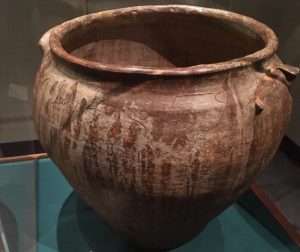 Our July 8 mystery, “Big old pot,” showed a 30-gallon pot made just before the Civil War by then slave David Drake, also known as “Dave the potter.” It’s in the Atlanta History Center.
Our July 8 mystery, “Big old pot,” showed a 30-gallon pot made just before the Civil War by then slave David Drake, also known as “Dave the potter.” It’s in the Atlanta History Center.
Congratulations to a handful of readers who recognized this important Edgefield County artisan and one of his many huge pots: Kristina Wheeler of West Ashley; Marnie Huger of Richmond, Va.; Susu Ravenel of Charleston; and George Graf of Palmyra, Va.
Wheeler said the Charleston Museum holds and exhibits the largest public collection of Drake’s works: “Dave was born into slavery but learned how to create pottery and thanks to his understanding of written language, he signed and dated a lot of his work, sometimes including poetic verses.”
Huger shared that the pot on display was signed July 4, 1859. She added, “He inscribed these words on it: The forth of July is surely come to blow the fife and beat the drum.” Dave Drake was born enslaved about 1800 and lived in Edgeville, S.C.. He was named after his owner, Harvey Drake. He was taught to turn large clay pots and learned to read and write, often inscribing them with poems, revealing his literacy at a time when it was illegal for a slave to read and write. Today, his highly sought after pots are very valuable.”
- Send us a mystery: If you have a photo that you believe will stump readers, send it along (but make sure to tell us what it is because it may stump us too!) Send it along to editor@charlestoncurrents.com.
HISTORY: Dixie Hummingbirds
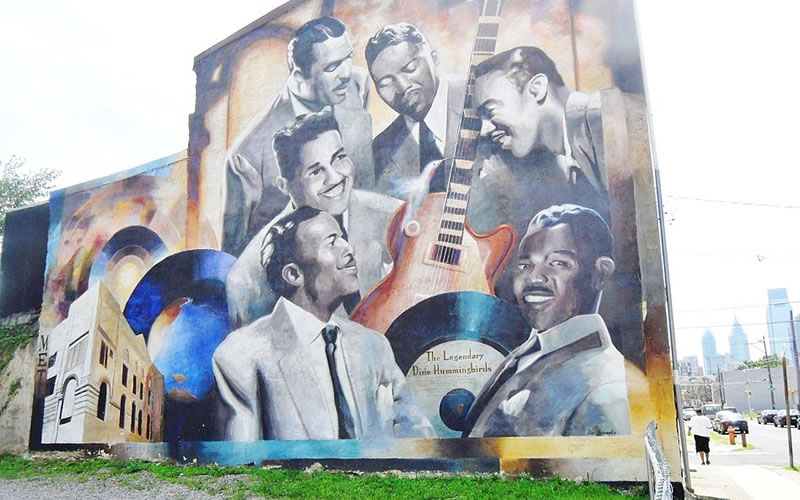
Mural in Philadelphia of the Dixie Hummingbirds. Source: Wikipedia.
S.C. Encyclopedia | Started in 1928 by 12-year-old James Davis and neighborhood friends Bonnie Gipson Jr., Fred Owens and Barney Parks, the gospel quartet—and later quintet—influenced scores of gospel, soul, and rock and roll artists. First called the Sterling High School Quartet, named for the high school the young men attended in their hometown of Greenville, the group made the transition from a cappella harmony singing at the Bethel Church of God to electrified music.
The group was singing professionally in churches and on the radio by the mid-1930s, and Davis wanted to name the group the South Carolina Hummingbirds but determined that that would be too long. The Birds, as their fans affectionately came to call them, drove to New York City to record twelve old-time harmony sides for the Decca label in 1938. That same year, with the addition of the 13-year-old singer and Spartanburg native Ira Tucker, the group moved toward a more powerful electric sound that served as a precursor to rock music. The group moved to Philadelphia in 1942, and Tucker worked his way from backing tenor into the group’s fiery and flamboyant (for the times and the genre of music) lead singer. By their 1952 recordings on the Peacock label, the Birds were on their way to gospel stardom.
The group is perhaps best known for their re-recording of “Loves Me Like a Rock” with the singer-songwriter Paul Simon in 1973, for which they won a Grammy Award. Artists as prominent as Stevie Wonder credit the Birds as a direct musical influence, drawing on Tucker’s audience interaction and his soaring, pleading vocals. William Bobo, who joined the group after Tucker, is considered to be one of the great bass singers in the history of American popular music. One reviewer wrote that the group claimed “almost universal recognition as the greatest Southern quartet of their generation.”
— Excerpted from an entry by Alan Richard. This entry may not have been updated since 2006. To read more about this or 2,000 other entries about South Carolina, check out The South Carolina Encyclopedia, published in 2006 by USC Press. (Information used by permission.)
CALENDAR: Lowcountry Jazz Festival to return Labor Day weekend
Staff reports | The 11th annual Lowcountry Jazz Festival will return Aug. 30 for three days of smooth jazz at the Charleston Gaillard Center featuring superstar artists and up-and-coming instrumentalists and vocalists.
7:30 p.m. to 11 p.m., Aug. 30: The All White Party Affair, featuring Grammy-nominated soul slinger Anthony David. The event will have an array of sweet and savory bites, curated to pair perfectly with award-winning wines. If wine isn’t your thing, we will have plenty of other beverages available. Tickets are $85.
7:30 p.m., Aug. 31: Day One of the Festival will include several artists: The Sax Pack. Richard Elliott, Peter White, Keiko Matsui, DW3 and the West Coast Jam Horns. Tickets are $68 to $153.
7:30 p.m., Sept. 1: Day Two of the Festival will include these artists: Dave Koz and Friends Summer Horns with Gerald Albright, Rick Braun, Kenny Lattimore and Aubrey Logan; Marion Meadows; Kirk Whalum; and Jonathan Butler. Tickets are $68 to $153.
The festival is the primary fundraiser for Closing the Gap in Health Care, Inc., a 501(c)3 nonprofit organization whose primary mission is decreasing health disparities and increasing health literacy, especially for African Americans and the underserved in our community, South Carolina and the nation. Proceeds also support the Thaddeus John Bell, M.D. Endowment Fund. This scholarship fund was created conjointly with the Coastal Community Foundation of South Carolina to assist students who pursue a health science degree and graduate from the Medical University of South Carolina. Learn more.
Also ahead at the Gaillard Center:
How Did This Get Made — Live!, 7:30 p.m., July 18, Charleston Gaillard Center, 95 Calhoun St., Charleston. Have you ever seen a movie so bad that it’s good? Podcasters Paul Scheer (The League, Black Monday), Jason Mantzoukas (The League, Brooklyn 99) and June Diane Raphael (Grace & Frankie, Long Shot) are experts in the best of the worst of cinema. Live episodes of the trio’s podcast are a truly unique experience allowing the audience to participate through questions to the hosts, creating impromptu songs for segments and viewing one-of-a-kind clips. Tickets are $38 to $78.
Jennifer Holliday: 4 p.m. Aug. 2. The Grammy and Tony award-winning singer and actor, Jennifer Holliday, shows her amazing voice for a one-hour singing performance to close out the 2019 Lowcountry Mental Health Conference. She will also be taking time to share her personal story and struggles with depression while talking about the work she is doing to bring awareness to mental health issues. Tickets are $28.
Also on the calendar:
![]() Groundbreaking: 10:30 a.m. July 16, 997 Morrison Drive, Charleston. Local and state officials will meet to break ground on the new Charleston Tech Center. It will be a six-story, 92,000-square-foot building and neighboring parking deck that will include quarters for the Charleston Digital Corridor. It is scheduled to open sometime next year. More info.
Groundbreaking: 10:30 a.m. July 16, 997 Morrison Drive, Charleston. Local and state officials will meet to break ground on the new Charleston Tech Center. It will be a six-story, 92,000-square-foot building and neighboring parking deck that will include quarters for the Charleston Digital Corridor. It is scheduled to open sometime next year. More info.
Reggae Nights concert: 8 p.m., July 19, James Island County Park, James Island. Well Charged is the band featured for the third summer concert in the Reggae Nights series offered by the Charleston County Park and Recreation Commission. Gates open at 7:30 p.m. Originating from Charleston, SC, Well Charged was founded on a shared love for vintage reggae, rocksteady and ska music. With a style inspired by early pioneers of Caribbean music, such as Alton Ellis, Desmond Dekker and Prince Buster, Well Charged released their EP, Lift up Sessions, in October 2018. Food is available on site. Crafters and vendors will also be on site with souvenirs available for purchase. Advance tickets are not available, and admission is $10 per person at the gate. Gold Pass holders and kids 12 and under are free. Concerts will take place rain or shine.
Charleston Variety Show: 2 p.m. and 7 p.m., July 20, and 3 p.m., July 21, Charleston Music Hall, John St., Charleston. Longtime Charleston producers and entertainers Brad and Jennifer Moranz have gathered a talented cast of musicians, singers and dancers for an all-new show this summer. Featuring pop, rock and country favorites mixed with dancing and comedy skits, the Charleston Variety Show welcomes new performers and audience favorites. Tickets are $19 to $39. More: www.CharlestonMusicHall.com.
Lee Barbour Trio: 6 p.m. July 24, Gibbes Museum of Art, 135 Meeting St., Charleston. Talented guitarist Lee Barbour will lead a trio to open the third annual Art of Jazz Series, a project of the museum and Charleston Jazz. Tickets are $25. Learn more about this and other shows through this link.
Me and My Girlfriend reception: 5 p.m. to 8 p.m., July 26, Redux Contemporary Art Center, 1056 King St., Charleston. The reception is for a two-person exhibit featuring the work on HNin Nie and Grace Stott that will be on display through September 13. The exhibit examines the interconnectivity and parallels between the work of two distinct creative practices, according to a press release. More info.
John’s Island Book Sale: Starts at 9 a.m. on July 26 and 27, John’s Island Regional Library, 3531 Maybank Highway, Johns Island. John the Charleston Friends of the Library to browse through more than 10,000 gently-used books, CDs, DVDs, and audio books at prices that can’t be beat.More info: www.CharlestonLibraryFriends.org.
Early morning bird walks at Caw Caw: 8:30 a.m. every Wednesday and Saturday, Caw Caw Interpretive Center, Ravenel. You can learn about habitats and birds, butterflies and other organisms in this two-hour session. Registration is not required, but participants are to be 15 and up. $10 per person or free to Gold Pass holders. More: http://www.CharlestonCountyParks.com.
AREA MARKETS
![]() TUESDAYS. The Mount Pleasant Farmers Market is every Tuesday from 3:30 p.m. to 7 p.m. at the market pavillion at Moultrie Middle School, 645 Coleman Blvd., Mount Pleasant. Free parking. Lots of activities. More info.
TUESDAYS. The Mount Pleasant Farmers Market is every Tuesday from 3:30 p.m. to 7 p.m. at the market pavillion at Moultrie Middle School, 645 Coleman Blvd., Mount Pleasant. Free parking. Lots of activities. More info.
WEDNESDAYS. The West Ashley Farmers Market is every Wednesday from 3 p.m. to 7 p.m. in Ackerman Park off Sycamore Avenue in West Ashley. The last week of the market will be the first week of October. More.
FRIDAYS/SATURDAYS: Night Market. Every Friday and Saturday from 6:30 p.m. to 10:30 p.m. for the rest of the year, you can shop with 108 vendors, including artists and craftsmen, at the night market on Market Street between East Bay and Church streets. It’s more than four blocks of local shopping and fun. Free.
SATURDAYS: Johns Island Farmers Market operates each Saturday from 9:30 a.m. to 1:30 p.m. year-round with more than 50 local farmers and vendors, food trucks, music and more. The market is located on the campus of Charleston Collegiate School, 2024 Academy Road, Johns Island
SATURDAYS: The Charleston Farmers Market is open 8 a.m. to 2 p.m. in Marion Square each Saturday through Nov. 30. More info.
- If you have an event to list on our calendar, please send it to feedback@charlestoncurrents.com for consideration. The calendar is updated weekly on Mondays.
If you like what you’ve been reading, how about considering a contribution so that we can continue to provide you with good news about Charleston and the Lowcountry. Interested? Just click the image below.
 We Can Do Better, South Carolina! offers incisive commentaries by editor and publisher Andy Brack on the American South, the common good and interesting South Carolina leaders, such as former U.S. Sen. Fritz Hollings, civil rights advocate Septima Clark, former S.C. Gov. David Beasley and more. There also are discussions on civil rights struggles with which the Palmetto State continues to grapple. as well as commentaries on politics, governments, the hangovers of South Carolina’s past and her future opportunities.
We Can Do Better, South Carolina! offers incisive commentaries by editor and publisher Andy Brack on the American South, the common good and interesting South Carolina leaders, such as former U.S. Sen. Fritz Hollings, civil rights advocate Septima Clark, former S.C. Gov. David Beasley and more. There also are discussions on civil rights struggles with which the Palmetto State continues to grapple. as well as commentaries on politics, governments, the hangovers of South Carolina’s past and her future opportunities.
We Can Do Better, South Carolina! is available for $14.99 in paperback or as a Kindle book for $7.99. Click here to purchase your copy. A paperback version will be ready for order isoon.
- If you have a comment or questions about the book, please let us know at: editor@charlestoncurrents.com
OUR UNDERWRITERS
Charleston Currents is an underwriter-supported weekly online journal of good news about the Charleston area and Lowcountry of South Carolina.
- Meet our underwriters
- To learn more about how your organization or business can benefit, click here to contact us. Or give us a holler on the phone at: 843.670.3996.
OUR TEAM
Charleston Currents offers insightful community comment and good news on events each week. It cuts through the information clutter to offer the best of what’s happening locally.
- Mailing address: P.O. Box. 22261 | Charleston, SC 29413
- Phone: 843.670.3996
Charleston Currents is provided to you weekly by:
- Editor and publisher: Andy Brack, 843.670.3996
- Contributing editor, common good, Fred Palm
- Contributing editor, money: Kyra Morris
- Contributing editor, Palmetto Poem: Marjory Wentworth
- Contributing editor, real estate: Digit Matheny
- Contributing photographer: Rob Byko
SUBSCRIBE FOR FREE
Subscriptions to Charleston Currents are free.
- Click here to subscribe.
- Unsubscribe. We don’t want to lose you as a reader of Charleston Currents, but if you must unsubscribe, you will have to do it through the email edition you receive. Just go to the bottom of any of your weekly newsletters and click the “unsubscribe” function. If that doesn’t work, please send us an email with the word “unsubscribe” in the subject line.
- © 2008-2019, Statehouse Report, LLC. All rights reserved. Charleston Currents is published every Monday by Statehouse Report LLC, PO Box 22261, Charleston, SC 29413.




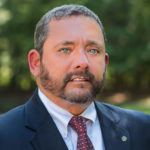
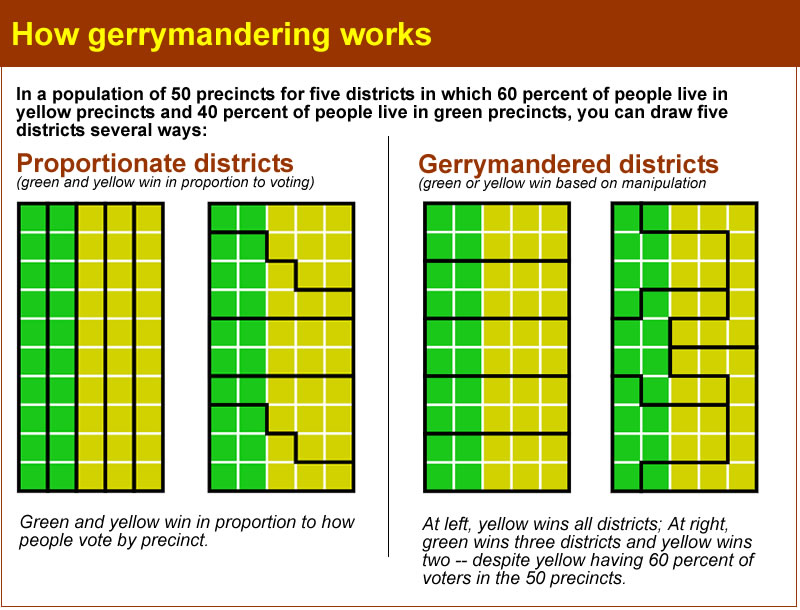
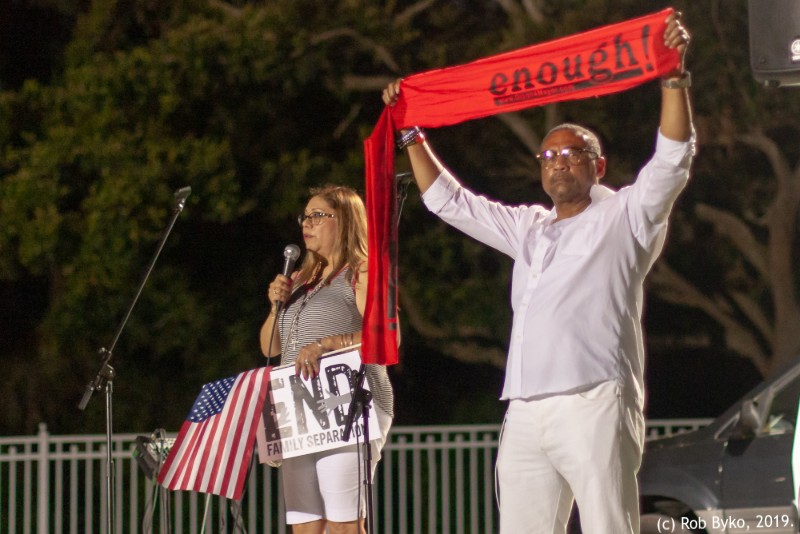



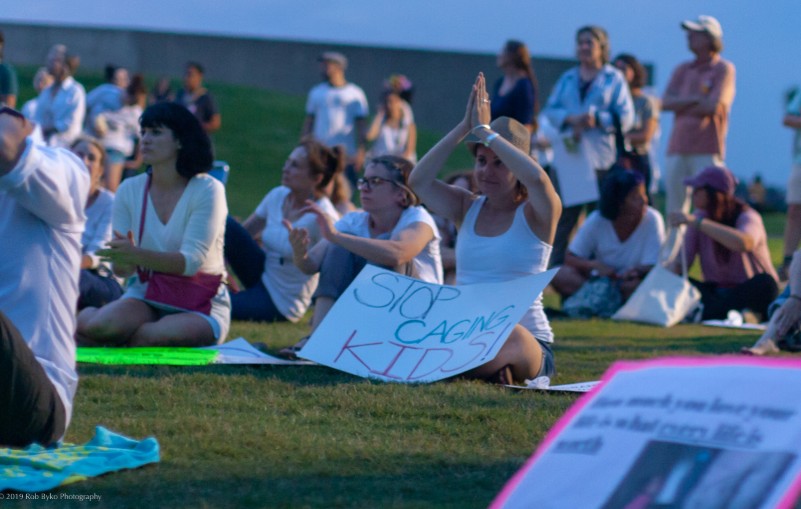





 We Can Do Better, South Carolina!
We Can Do Better, South Carolina!
























